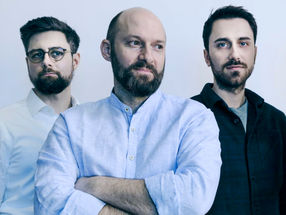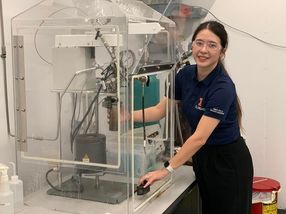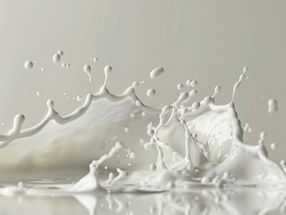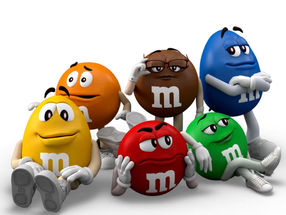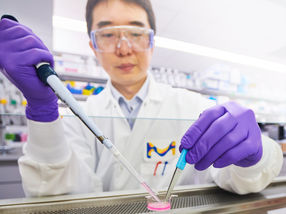Molecular Rendezvous Caught on Camera
Scientists watch on the atomic level how individual molecules recognize each other
Advertisement
The body is an almost perfect machine. For it to function properly, each individual component, that is each molecule, must reliably fulfill its specific function. Each molecule must thus "recognize" other molecules and work with them. A team of researchers from the Max Planck Institute for Solid State Research in Stuttgart, the Fraunhofer Institute in Freiburg, and King's College in London, has now successfully filmed pairs of molecules during the recognition process. As reported to the journal Angewandte Chemie, the shapes of the molecules change to accommodate each other.
Like humans, molecules also "greet" each other with a kind of "handshake". Anyone who has tried to shake someone's right hand with his or her own left will have had a little trouble: the right and left hands do not fit together. In the same way, some molecules that exist in both a right-handed (D) and left-handed (L) configuration can tell if others they encounter are the D or L form.
Magali Lingenfelder and colleagues at the Max Planck Institute for Solid State Research have now been able to use scanning tunneling microscopy to take a series of pictures that follow in detail the "encounters" of diphenylalanine molecules adsorbed onto a substrate. (Diphenylalanine is the central structural unit within polypeptide fibers found in the brains of Alzheimer's patients.) The "film sequences" reveal that only molecules with the same chirality (handedness) readily aggregate into pairs and chains.
Just as in a handshake, it is not enough that the right hands hold each other. To grip each other firmly, the two hands must adapt to fit their shapes together. Molecules do the same: close examination of the "film", in conjunction with theoretical calculations by researchers from King's College, prove that this type of dynamic accommodation of shape also occurs when two molecules "shake hands".
"Our work finally demonstrates that Linus Pauling was right with his theory of intermolecular conformation of over 50 years ago," says Lingenfelder. "In molecular recognition, it is not so much the static forms that are important, but rather how well the molecules can conform to each other."
Original publication: Magalí Lingenfelder et al.; "Tracking the Chiral Recognition of Adsorbed Dipeptides at the Single-Molecule Level"; Angewandte Chemie International Edition 2007.
Most read news
Organizations
Other news from the department science

Get the chemical industry in your inbox
By submitting this form you agree that LUMITOS AG will send you the newsletter(s) selected above by email. Your data will not be passed on to third parties. Your data will be stored and processed in accordance with our data protection regulations. LUMITOS may contact you by email for the purpose of advertising or market and opinion surveys. You can revoke your consent at any time without giving reasons to LUMITOS AG, Ernst-Augustin-Str. 2, 12489 Berlin, Germany or by e-mail at revoke@lumitos.com with effect for the future. In addition, each email contains a link to unsubscribe from the corresponding newsletter.




























